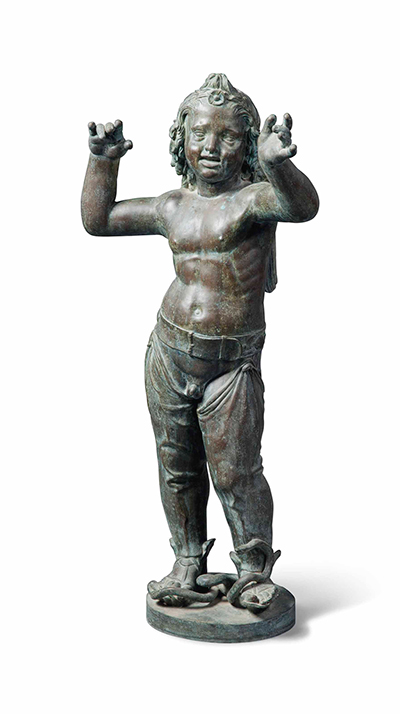The Amor Atys is perhaps Donatello's most enigmatic and ponderous work. This is due mainly to the fact that so little is know about how it came into being.
Made of bronze and at a height of 104cm, this small, but beautifully formed statue of a laughing youth is thought to have been sculpted around 1440.
When it was acquired by the Uffizi from Pietro Bono Doni in the 1770's, it was simply known as "Ancient Idol", and had been attributed to Donatello in the sixteenth century by renowned artist and historian, Vasari. Today, it is known as the Amor Atys and is housed in Museo Nazionale del Bargello in Florence.
A Private Commission?
Due to the fact that there is no definitive record of the original commission for the work, over the centuries there has been much speculation about the sculpture's provenance. Although the Amor Atys was sold to the Uffizi by Pietro Bono Doni, whose family had owned the sculpture for many years, it is certain that they did not originally commission it.
The family fortune came into being in the sixteenth century, after Donatello death, so they would not have been able to afford it at the time it was made. The pagan nature and iconography of the subject led many historians to suggest that it was commissioned by one of Donatello's circle of humanist friends.
This is the most commonly accepted theory, as the humanists were known to be great patrons of the arts and in particular, art which was based in classical antiquities.
Symbolism
The lack of historical evidence as to the origins of the Amor Atys has led to still further study into what the statue actually symbolises. When it was first listed in the Doni family inventory, it was labelled a "Lucifer", however, after much deliberation this was declared unlikely.
Later, the date of the work informed the common consensus that it was inspired during Donatello's ancient period and must, in fact, be depicting a classical icon. The sculpture itself offers many clues as to who the joyful youth may be. Dancing, with his arms in the air, the boy has a pagan and carefree demeanour. He has winged feet, which initially led scholars to believe he may be Eros or Cupid.
However, as he has his buttocks and genitals displayed through open and loose trousers, he could also be Attis, the beautiful young shepherd who castrated himself in an act of induced madness. Other clues include, a tail which could indicate Pan or some faun or satyr, Mercury's winged sandals, and a belt with poppy capsules which could of course symbolise Hypnos, the personification and bringer of sleep.
The most important clue may have been whatever it was that the boy held in his hand, but we will never know as it has been missing since 1677. After all the deliberations, researchers settled on the name we know the boy by today, Amor Attis. This seems to be a compromise between the sensual and forbidden nature of Attis and all his joyful abandon, and the obvious and symbolic references to Ero, God of love.
Donatello's Influences
Regardless of all the speculation, there can be little doubt that this is one of Donatello's most accomplished works. The movement and realism of the work, coupled with the sheer joy that he manages to convey, is what draws people to marvel at it, even today, almost 600 later.
Donatello has long been accepted as one of the most sensual and daring sculptors of his time, perhaps of any time, and Amor Atys is indeed a wonderful example of his skill. Almost certainly, Ghiberti's early influence can be seen in this sculpture, evident in the realistic and energetic stance of the young boy. However, the sheer pleasure and emotion in the work clearly comes from Donatello's individuality.
As an artist, Donatello took great inspiration from the skill of those around him. He admired and absorbed, but he never copied. He some how managed to take what he saw and made it his own; made it better. Giotto, a man who transformed religious art at the time through realism, made a huge impression on Donatello and the way he expressed his work.
Perhaps, the work of Giotto, and his revolutionary style, inspired Donatello to expand Amor Atys into something beyond art; into life. While this sculpture is not one of his best known pieces, unlike the David or St George, there is a freedom and playfulness that sets it apart. It is a breath of fresh air.




